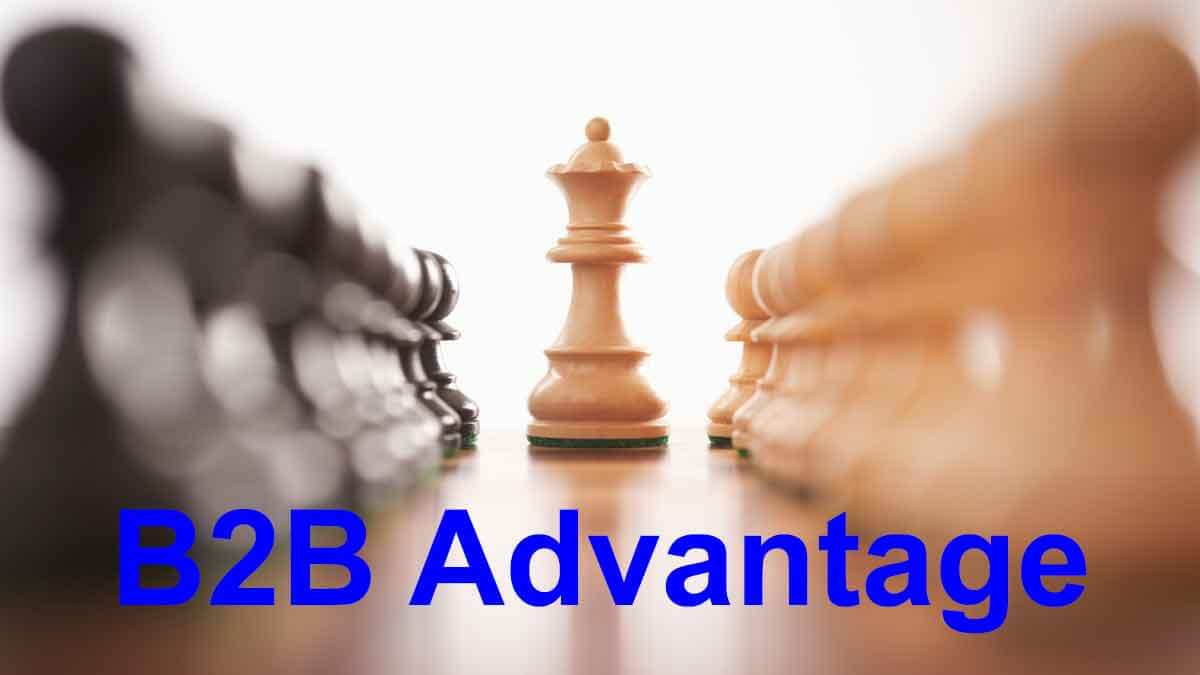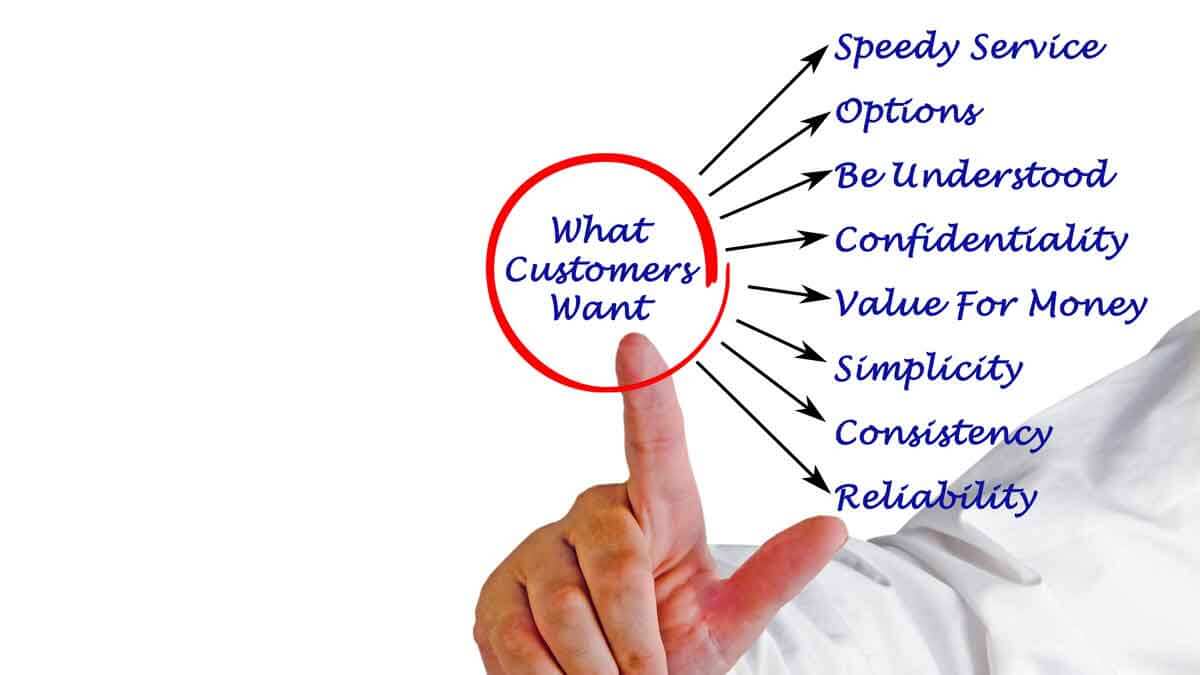Steve Jobs quoted Henry Ford, who said, “If I had asked people what they wanted, they would have said faster horses.’” But these men were end-consumers themselves, so they understood their markets. Most B2B suppliers, typically have much to learn about customer desired outcomes… and B2B customers are willing and able to tell them.
More in article, Should You Develop New Products like Steve Jobs? (Originally published in B2B Organic Growth Newsletter).
B2C companies seek to understand customer needs. B2B companies should do this and engage customers, priming them to buy later. If you interview ten customers that represent 20% or 50% of the market segment’s buying power, wouldn’t it be an incredible waste if you failed to engage these companies… so they wanted to work with you?
More in article, The Missing Objective in B2B VOC (Originally published in B2B Organic Growth Newsletter).
Here’s the “B2B Advantage”: Your customers can offer more insight than end-consumers due to their knowledge, interest, objectivity and foresight. But if your company uses hand-me-down consumer goods voice-of-customer methods, you’ve ignored your own advantage. Your competitors may not.
More in white paper, Catch the Innovation Wave (page 7).
You can ask for pricing decisions using a survey, e.g. Van Westendorp. But it’s hard to get a straight answer in concentrated B2B markets: They know they’ll be negotiating prices later. Better to understand the customer’s world so well you can create a value calculator… to model their pricing decision-making. You’ll have longer-lasting insights vs. a one-time survey.
More in article, Pricing New vs. Existing Products (Originally published in B2B Organic Growth Newsletter).
If you were gathering customer insights about belts, would you rather interview someone using a belt to convey iron ore… or to hold up their pants? B2B customers can usually provide more insight than end-consumers due to greater knowledge, interest, objectivity and foresight. But these advantages are no advantage unless you use a B2B-optimized approach.
More in white paper, Catch the Innovation Wave (page 6).
Unlike many B2C benefits, e.g. amusement, comfort, and self-esteem, B2B customer benefits are usually measurable, economic and—wait for it now—predictable. This predictability means B2B suppliers who study customer outcomes, like a science, will be handsomely rewarded. B2B customers will eagerly help you… if you know how to ask them.
More in article, The Science behind Great Value Propositions (Originally published in B2B Organic Growth Newsletter).
If the customer felt they helped you with your interview, you probably wasted your airfare. But if they felt it was their interview, asked for a copy of the notes, and said you were a good meeting facilitator… you probably learned things your competitors don’t know. B2B insight skills are needed for this. Do your people have them?
More in e-book, Reinventing VOC for B2B (page 9).
Research shows customer engagement is critical to successful innovation. This engagement increases as you move through six “insight levels”: 1) Deciding what customers want in your conference rooms, 2) polling your sales force, 3) conducting customer surveys, 4) qualitative VOC, 5) quantitative VOC, and 6) B2B-optimized VOC. Where are you?
More in article, Boosting Innovation…In One Easy Lesson (Originally published in B2B Organic Growth Newsletter).
Clever companies realize they’ll “hear what they want to hear” without quantitative VOC. To do it right, B2B companies should weight responses based on customer buying power. And don’t just ask for importance ratings: Ask for satisfaction ratings as well. The only hope for premium pricing is pursuing needs that are both important and unsatisfied.
More in article, Constraints to Organic Growth
Traditional VOC relies on questionnaires, tape recorders and post-interview analyses. That’s fine for B2C, but your B2B customers are insightful, rational, interested and fewer in number. They’re smart and will make you smarter if you engage them in a peer-to-peer fashion, take notes with a digital projector, skillfully probe, and let them lead you.
More in executive briefing, Seven Mistakes that Stunt Organic Growth.
Many suppliers unwittingly detach from customers with a host of risky behaviors: 1) Asking customers to fill in boring questionnaires, 2) using interviews to “validate” their preconceived solutions, 3) failing to probe with insightful questions, and 4) neglecting to follow-up interviews with rich, ongoing engagement. Is it time to learn customer-engagement skills?
More in article, 5 Growth Risks You Can Stop Taking (Originally published in B2B Organic Growth Newsletter).
We’ve coached hundreds of B2B new product teams and here’s the awkward reality: When teams begin using advanced methods to interview customers, they are usually surprised by what customers want. This means the teams had been planning on developing a product that interested them, not customers. This is a sobering experience. Have you had it yet?
More in article, The Cost Cutter’s Guide to Growth (Originally published in B2B Organic Growth Newsletter)
It’s ironic: B2B customers have the only vote on whether our new product is any good. B2B customers want us to innovate on their behalf. B2B customers are eminently qualified to guide us. Yet many suppliers all but ignore B2B customers when developing their product concepts. Today, this is a global pandemic.
More in article, Is Your Innovation Supplier-Centric… or Customer-Centric? (Originally published in B2B Organic Growth Newsletter)
Research shows the best way to sell a product is to probe customers’ needs. But why wait until the product is developed? If you probe beforehand, you’ll create a better product and “pre-sell” your product. This isn’t practical for interviewing millions of B2C toothpaste buyers, but it is for concentrated B2B markets. B2B engagement skills aren’t difficult. Do you have them?
More in newsletter, How to Grow in a Stagnant Economy (Nov-Dec, 2008)













